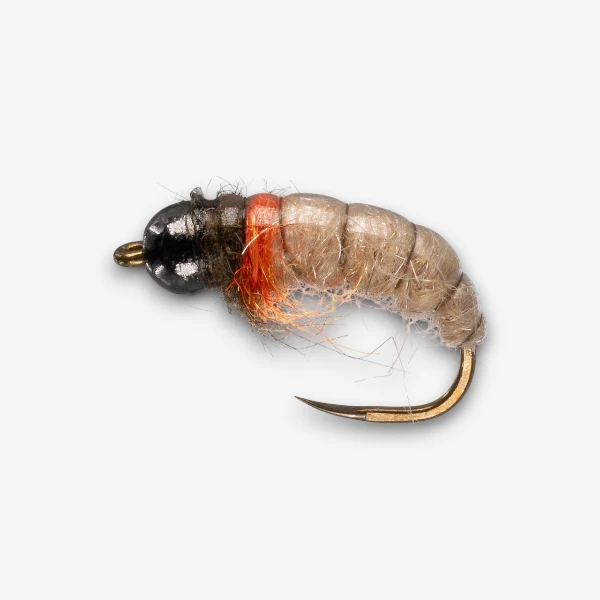October Caddis Fall Caddis
Description
While the October Caddis (Dicosmoecus), also known as the Ginger Caddis or Fall Caddis, and the Great Autumn Brown Sedge (Pycnopsyche), are from different genera, the flies are often treated similarly in fly fishing due to their similarities in size, appearance, and behavior during their hatches. Both species are prominent late-season caddisflies that hatch in the fall, creating similar fishing opportunities for anglers. The similarities in their life cycles and the way fish respond to them are the main reasons why these two caddisflies are often considered interchangeable when it comes to fly fishing.
Overview: The October Caddis (Dicosmoecus) is one of the largest caddisflies, easily identifiable by its orange-brown, ginger-colored body and distinctive, large wings. It hatches primarily in the fall, typically from late September through October, in fast-moving streams and rivers. The Great Autumn Brown Sedge (Hydropsyche) shares similar characteristics, with a robust brown to olive body and large wings, and it also hatches in the fall, often during the same time as the October Caddis. Both species are important for trout during the late season when other food sources may be less abundant.
Nymph Stage: Both caddisfly nymphs are large, measuring approximately 1 to 1.5 inches in length. They are robust and dark-colored, with a segmented appearance. Both species create protective cases out of rocks and debris, which they carry with them as they crawl along the riverbed. October Caddis nymphs are darker, often with a more pronounced orange or reddish hue, while Great Autumn Brown Sedge nymphs are typically more olive or brown. Both nymphs are bottom-dwellers, actively feeding on detritus and small invertebrates. Common hook sizes for both nymphs are between 6 and 10.
Dry/Dun/Spinner: The adult October Caddis is a large insect, often 1 to 1.5 inches in length, with an orange-brown body and translucent wings with a reddish-brown tint. It is known for its clumsy flight and tendency to fall into the water, where trout eagerly feed on them. The Great Autumn Brown Sedge adult has a similar size range and brown or olive body with translucent wings, though it may have a slightly more muted coloration. Both species are fished with similar dry fly patterns that range in hook sizes from 6 to 10. Dry flies are effective when the insects are floating on the surface, and both caddisflies typically emerge in the late afternoon or early evening.
Hatch Chart
Subscribe to view hatch locations. Hatch data is available for all species.


